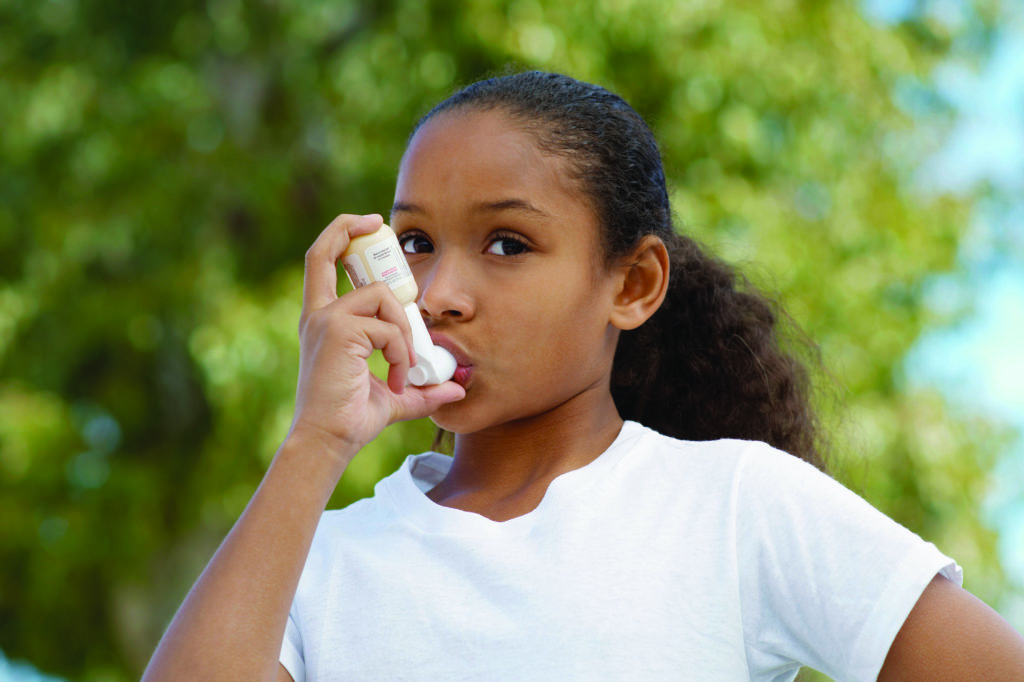Sponsored Content by Wheezo
As the year winds down and the lazy summer days are just around the corner, it can be really easy to break out of good habits when it comes to staying on top of your kid’s asthma …
… but asthma doesn’t take a holiday over summer.
Did you know? Typically when kids return to school after the summer holidays, asthma-related hospitalisations increase by 20-25%? So maintaining your routines over the next few weeks will make it much easier to keep their asthma flare-ups to a minimum when they encounter new triggers in the classroom.
Stay prepared for flare-ups with these three simple tips:
1. Watch for symptoms
The four common symptoms of asthma are coughing, wheezing, shortness of breath and chest tightness. The most common asthma symptom in children under six is wheezing, a whistling sound made as airways in the lungs narrow, usually when breathing out, but sometimes when breathing in. Wheezing is the body’s way of reminding you to check for symptoms, triggers and whether medication is needed. However, it can often only be heard using a stethoscope. Using wheezo’s digital wheeze monitor can give you a quicker, more objective assessment.
2. Monitor air pollution and pollen levels
Air pollution and pollen might not be as easy to spot as other triggers (like pets and exercise), but these small contaminants can still wreak havoc in the lungs. In addition, sunny days can cause all sorts of chemical reactions, making pollution worse.
Pollutants:
- Carbon monoxide: reduces oxygen in the blood
- Nitrogen dioxide: can trigger asthma attacks
- Ozone: can trigger asthma attacks
- Sulphur dioxide: can trigger asthma attacks
- Particulate matter (e.g. PM 2.5 and PM 10)
Wheezo works with an app to detect wheeze and provide a forecast of pollution and pollen levels.
During bushfire season, watch for PM 2.5 as these small toxic particles can embed deeply within the lungs and cause severe asthma flare-ups.
3. Visit the doctor
Now that the holidays have come around, it’s probably a good idea to see your GP to objectively assess your child’s asthma control, review their medication and update their asthma action plan.
Wheezo can give your doctor a clear picture of how well your child’s asthma is controlled between visits. By sharing detailed records of their symptoms and triggers, your doctor can better understand their asthma to help improve asthma management. wheezo includes a digital wheeze monitor and app that records and analyses breath sounds for the presence of wheeze, the sound your doctor listens for with a stethoscope. Through the app, you can log medication and connect self-reported symptoms, triggers and peak-flow measurements to share at the touch of a button.
Health Information – Information on Blog
All content and media on the Healthengine Blog is created and published online for general informational purposes only. It is not intended to be specific personal advice and does not constitute professional medical advice or any other form of advice and is provided ‘as is’ without warranty of any kind, express or implied, to the fullest extent possible under the law. In no event will Healthengine be liable to any party for any direct, indirect, incidental or consequential damages or losses whatsoever arising from access to, reliance on, or use of or downloading of information from the Healthengine Blog (or any associated or linked website).
Always seek the guidance of your doctor or other qualified health professional with any questions you may have regarding your personal situation, including any health or a medical condition. Never disregard the advice of a medical or other professional, or delay in seeking it because of something you have read on this Website.
If you think you may have a medical emergency, call your doctor, go to the nearest hospital emergency department, or call the emergency services immediately.
Date of Preparation: November 2021. RESP308.
People diagnosed with asthma should always read the label. If symptoms persist, talk to your health professional.
Sponsored Content
The content on this page is sponsored and Healthengine receives
fees from its Partners. This may contain links to third party information and products.
Such content and links are not owned, operated or maintained by Healthengine nor are
they affiliated or associated with Healthengine in any way, unless indicated on the
external site. Healthengine is not responsible for the content, quality, accuracy or
completeness of any third party material appearing on any links to third party’s
content.
All content and media on the HealthEngine Blog is created and published online for informational purposes only. It is not intended to be a substitute for professional medical advice and should not be relied on as health or personal advice. Always seek the guidance of your doctor or other qualified health professional with any questions you may have regarding your health or a medical condition. Never disregard the advice of a medical professional, or delay in seeking it because of something you have read on this Website. If you think you may have a medical emergency, call your doctor, go to the nearest hospital emergency department, or call the emergency services immediately.








